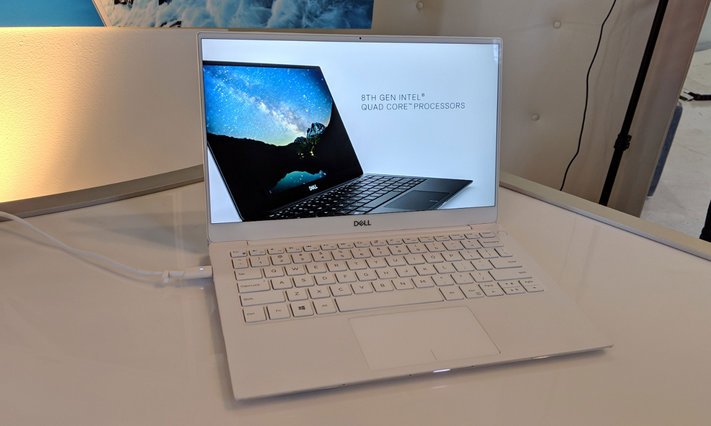5 Big Laptop Trends to Watch in 2019
Editor's Note: This post originally appeared on Tom's Hardware.
After a rousing CES 2019 in Las Vegas that unveiled a bunch of refreshes around Nvidia’s RTX graphics cards for laptops and Intel’s Whiskey Lake CPUs, laptops will be an exciting category in consumer tech in 2019.
And after a week looking at almost every laptop in Sin City, some major trends started to emerge. Here’s what to expect from laptops in 2019:
Desktop Replacements
Let it be known, the laptop has its knives out for the desktop. For those who don’t want to build their own, or just want an all-in-one solution that’s more portable than most desktop gaming rigs, some big gaming laptops are coming down the pipe. Notably, there’s the Alienware Area 51-m, a powerful laptop with a desktop processor and upgradeable graphics cards (though we’ve yet to see exactly how those will be sold and what compatibility will be like).
On the other side of that coin is the Asus ROG Mothership, a Surface Pro-style detachable that turns into a desktop monitor and separate keyboard. If a desktop isn’t for you, someone is releasing a giant laptop that might work for you.
Using Gaming Laptops for Everything Else
Sign up to receive The Snapshot, a free special dispatch from Laptop Mag, in your inbox.
We heard it from laptop companies, we heard it from Nvidia, we heard it from Microsoft: gaming laptops aren’t just for gaming anymore. During Nvidia’s press conference, CEO Jensen Huang announced that the company’s RTX GPUs will work to to accelerate 3D modeling and animation programs, edit 6K video (8K video on desktops) and broadcast pro-quality streaming from a single PC.
Microsoft, at its partner device showcase, detailed specific laptops, like the Acer Predator Triton 900, that could be used by content creators. The Predator has a flip out hinge that can fold down into a tablet. When used with a pen, it could be a powerful video-editing or photo-editing laptop with an RTX GPU.
More AMD Options
AMD’s CES had a ton of announcements, including its 3000 U and H-series Picasso APUs. Asus’ new TUF Gaming lineup will rely on the those processors along with AMD’s mobile GPUs. Additionally, the company’s Athlon chips will show up in Chromebooks from HP and Acer. It wouldn’t be surprising to see more companies announce laptops with AMD’s CPUs this year, though Intel will likely continue to dominate the space for another year.
OLED and 240 Hz Screens
One of HP’s marquee announcements was the 15-inch Spectre x360 with an OLED display arriving in March. Others aren’t far behind. Dell suggested that its 15-inch devices, particularly under the Dell G Series and Alienware brands, could see OLED later this year. Razer also showed us a prototype Razer Blade 15 with an OLED display, suggesting that was something that could be coming in the future.
HP also said its Omen 15 gaming notebook will have a 240 Hz option, and other vendors followed. Razer showed us a similar prototype Razer Blade with a 240 Hz display.
Very Slight Redesigns
If it ain’t broke, why fix it? We’re not seeing any major redesigns thus far. Dell moved the XPS 13’s webcam above the display (thank heavens) and redesigned the hinge for easier opening, and that may have been the most radical redesign of the show on a consumer laptop. Lenovo’s ThinkPad lineup has some new materials, but otherwise similar designs.
Part of this may be because when designs get so good, there’s little need to iterate. But it’s also possible that delays from Intel have left new designs waiting in the wings for whenever Ice Lake finally hits. Additionally, Intel announced Project Athena, a new notebook design project similar to ultrabooks, but told us very little about it. Perhaps its new tiny Lakefield motherboard will be what enables new designs.
Andrew is a contributing writer at Laptop Mag. His main focus lies in helpful how-to guides and laptop reviews, including Asus, Microsoft Surface, Samsung Chromebook, and Dell. He has also dabbled in peripherals, including webcams and docking stations. His work has also appeared in Tom's Hardware, Tom's Guide, PCMag, Kotaku, and Complex. He fondly remembers his first computer: a Gateway that still lives in a spare room in his parents' home, albeit without an internet connection. When he’s not writing about tech, you can find him playing video games, checking social media and waiting for the next Marvel movie.




